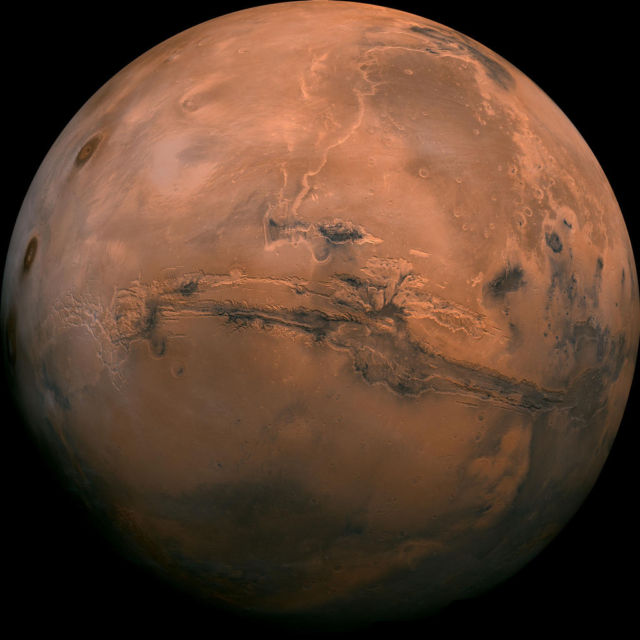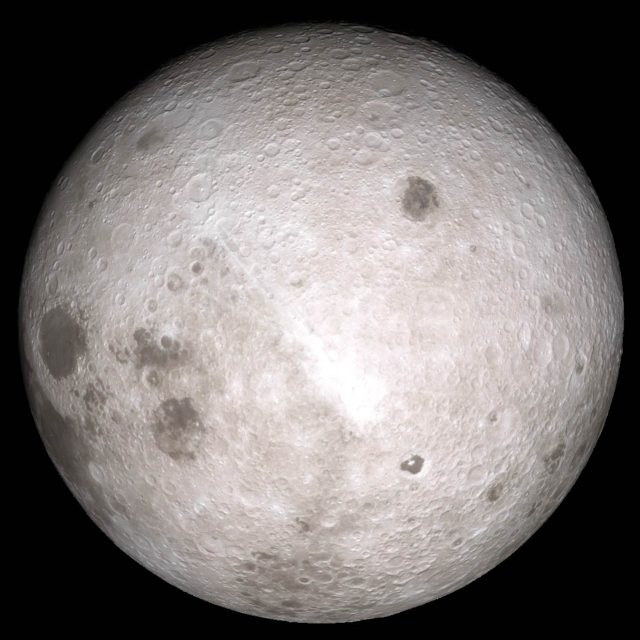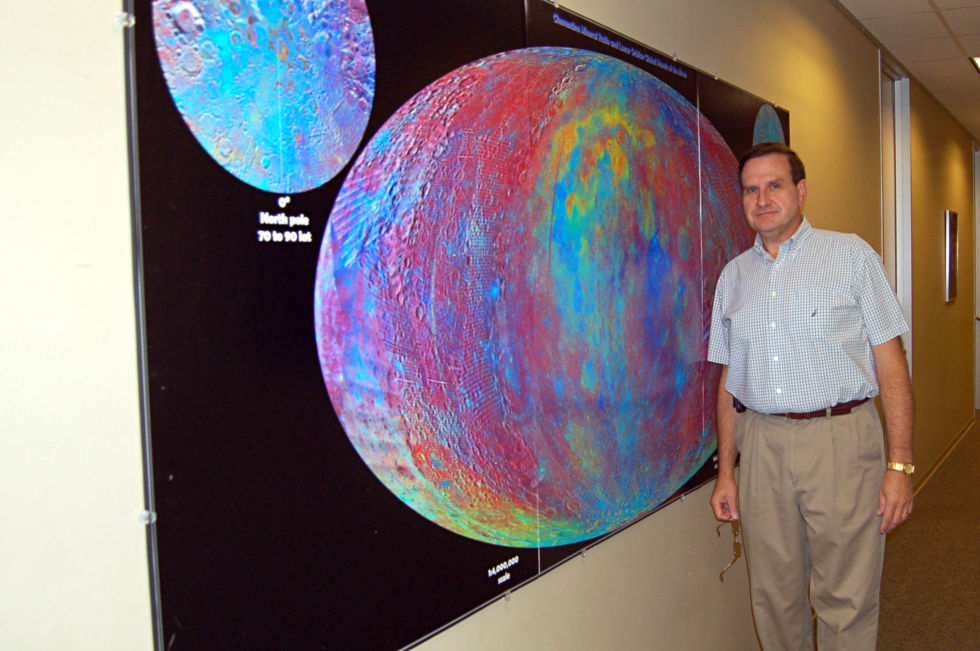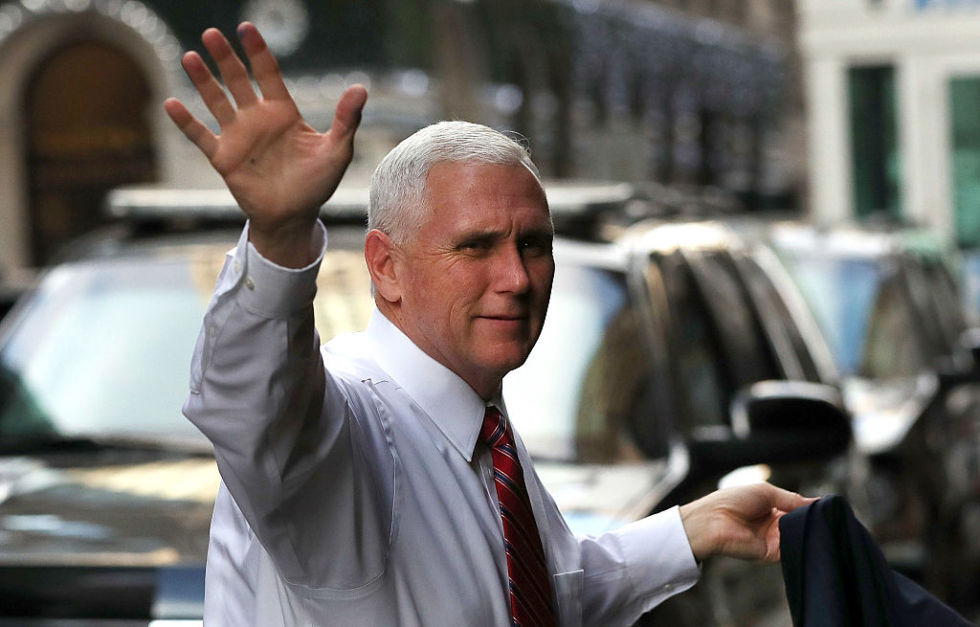A couple days old already but I feel this is a must-read for any one taking part in the Moon vs Mars debate.
NASA’s next stop—Mars or the Moon?
John Grunsfeld and Paul Spudis argue for and against Mars and the Moon.
by
Eric Berger - Dec 22, 2016 4:00pm CET
Mars or the Moon? It’s a debate that has bedeviled NASA for decades.
Aurich / Getty
HOUSTON—Possessed of slight build and modest height, John Grunsfeld is not an imposing man. But this appearance belies a brilliant mind and a considerable resume. A quarter-century ago, Grunsfeld worked as a physicist at the California Institute of Technology, studying X-ray and gamma ray astronomy, before becoming an astronaut. He flew in space five times and made three trips to the Hubble Space Telescope where he performed eight spacewalks to repair and upgrade the iconic instrument.
In 2012, Grunsfeld assumed responsibility for all of NASA’s science missions. He oversaw the dramatic landing of Curiosity on the surface of Mars, and he was in charge during the exploration of Pluto. He wrangled the James Webb Space Telescope toward the launch pad, and he plotted a pair of ambitious flights to Jupiter’s moon Europa.
On a gray day in early December, I met Grunsfeld—who left NASA earlier this year—at a Starbucks across the street from Johnson Space Center. In the shadow of the buildings where he spent nearly 20 years training to fly in space, we spoke for two hours about all areas of spaceflight, from the intriguing oceans of Europa to human destinations.
Still, the conversation kept circling back to Mars. The Red Planet captivates Grunsfeld, and, from inside NASA, he attempted to steer the massive US spaceflight enterprise toward landing humans there by the 2030s. Although he had some success, Grunsfeld realizes that NASA's
fragile, tentative plan for a human mission to Mars may soon unravel.
“I think all anybody has right now is faith that we’ll reach Mars,” Grunsfeld acknowledged. “Right now, it is just a dream.”

Enlarge / John Grunsfeld, STS-109 payload commander, is anchored on the end of the Space Shuttle Columbia’s robotic arm, moving toward the giant Hubble Space Telescope in 2002.
NASA
A few days later, and a few miles down the perpetually congested NASA Parkway that skirts the southern flank of Johnson Space Center, I met another eminent scientist for lunch. An academic through and through, Paul Spudis lacks the adventurer-astronaut credentials of Grunsfeld, but he has a formidable scientific mind. And Spudis, inspired to specialize in lunar geology while watching the Apollo 15 astronauts explore the lunar surface, is also a formidable advocate for human exploration—of the Moon.
Over a hamburger and dark beer at Boondoggles Pub, Spudis spoke about why he believes humans must return to the Moon before going deeper into the Solar System. As Spudis has outlined in a new book,
The Value of the Moon, the Moon is nearby, scientifically interesting, and useful. Moreover, he argues, it is precisely because NASA has chased after ephemeral Mars dreams for the better part of the last half century that humans have remained confined to low-Earth orbit since the end of Apollo.
Both men agree on one point: with NASA’s limited funds, even before possible cuts under a Trump administration, the space agency can’t do both. Sending astronauts to the Moon and establishing a colony would push human exploration of Mars into the second half of this century. Alternatively, making a direct push toward Mars would preclude any meaningful human exploration of the Moon.
A choice must be made. For the last six years, NASA has continued developing a deep space capsule, Orion, as well as begun construction on a large new rocket, the Space Launch System, as the foundation of an exploration program. NASA has promoted a “Journey to Mars,” but in reality the space agency has taken no definitive steps to preclude either a Moon or Mars pathway. That decision will have to be made soon. Within the next four years or so, the space agency must start designing and building specific hardware, for landing and living on either the Moon or Mars.
Which should it be?
The case for Mars
The aerospace community rarely agrees on anything, but pretty much everyone accepts that the next “mountain” for human explorers to climb involves astronauts to the fourth planet in the Solar System. Although it is a poor substitute for Earth—conditions on Mars are less hospitable than at Earth's South Pole during winter—Mars is the closest, best alternative humanity has to our world.
There are essentially three potential rationales for sending humans to Mars now. One is geopolitical. During the Cold War, the United States landed on the Moon to demonstrate technological superiority over the Soviet Union. A Mars landing would send such a statement with regard to Russia or China in the coming decades. However, unlike the 1960s and the race to the Moon, no other country today aspires to land on Mars. In fact, no other agency besides NASA has even successfully landed a rover on Mars.

Mars, the fourth rock from the Sun. Here's how it has been revealed in the last half-century by a series of robotic probes.
A second rationale is colonization. Elon Musk and SpaceX
espouse this idea, as do many in the “new space” community. Earth, they say, needs a backup plan, and Mars offers the most suitable location in the Solar System for humans to eke out a living. Over time, with its limited atmosphere and water resources, Mars could become marginally habitable. However, NASA has expressed no formal interest in colonization. Any plan NASA supports will bring astronauts home.
Science offers the final reason to go to Mars. This explains why NASA has increasingly talked about “finding life” elsewhere in the Solar System, or on exoplanets, in the next two decades. Robots can do interesting science on Mars, Grunsfeld said, but they cannot replace the field work done by astrobiologists or other specialists working
in situ.
“My passionate interest is in where we came from, where we’re going, and are we alone,” Grunsfeld said. “Mars, 3.8 billion years ago, was a happening place. It was in an orbit where it was cold at the mountaintops, with snowy peaks, and river deltas running into large lakes. Mars was habitable at the same time life began on Earth. All the right ingredients were there. As life took hold here, did the same thing happen on Mars? And, if so, have any of those microbes survived today?”
Curiosity’s exploration of Gale Crater during the last four years has raised a number of questions begging for follow-up exploration, Grunsfeld said. For example, while driving over sediments and rocks last summer, the rover measured a huge rise in methane. That could be of geophysical origin or produced by microbes below ground.
Most importantly, advocates say, Mars represents the next big leap for human civilization. If our evolutionary goal over the next 1,000 years is to find another Earth-like world in the neighborhood of Earth’s Solar System and develop the technologies and skills to send humans there, Mars represents the first step toward such a grand journey.
“Technically, if we decided that we, as a nation, wanted to go to Mars, we could go in a decade,” Grunsfeld said. “I also think that we could do a Mars orbit mission well within our current budget. Mostly, it’s not a budget problem. It’s a will problem.”
The case against Mars
Indeed, Mars
is a will problem. Because no compelling geopolitical reason exists for NASA to send humans to Mars, it merits limited discussion among the nation's strategic interests. For all of NASA’s talk about a “Journey to Mars” during the last six years, President Obama invested
scant political capital into the idea. He was more concerned with Earth science and the development of the commercial space industry. These are laudable goals, but in the big picture of human exploration of deep space, Obama largely punted to Congress.
Members of Congress, in turn, were more interested in programs that provided jobs for the here-and-now. Congress wanted planning rooms and factory floors for the SLS rocket and Orion spacecraft. To pay for these programs,
Congress slashed spending on space technology that would have provided the breakthroughs to land humans on Mars.
As for the president-elect? The first time Trump was asked about a journey to Mars, he responded that he was more interested in filling potholes.
In his book, Spudis offers an explanation for the political platitudes toward Mars from Obama and Congress during the last six years: “The dirty little secret is that most politicians love human Mars missions not because they have any desire or interest in doing them, but because it is an excellent and proven way to keep the space community pacified by selecting a goal that is so far into the future that no one will be held accountable for its continuing non-achievement.”
In recent years, some public momentum has built up for humans to Mars, both through NASA’s #JourneyToMars drumbeating and through popular movies like
The Martian, National Geographic’s new series
Mars, and
Elon Musk’s plans to colonize the planet. But this popular sentiment has yet to translate into concrete actions in Washington DC.
Unless the Trump administration makes a strong commitment to Mars exploration, this iteration of sending humans to the Red Planet may well die just like previous attempts during the last 50 years. The #JourneyToMars will be the victim of budgets and a lack of sustained will. Mars is just too far away, too technically challenging, and too expensive for half measures.
The case for the Moon
If Mars is a dream, the Moon is more tangible. Even so, more than 44 years have passed since Eugene Cernan stepped off the surface of the Moon, and no one has returned since. Despite being a resounding success for America, the Apollo program failed to create a lasting, sustained presence in deep space for humanity.
Spudis laments that, because NASA went to the Moon in the 1960s, much of the United States no longer sees it as a “sexy” destination. Indeed, President Obama in 2010
said as much by remarking of the Moon, “We’ve been there before.” The reality is that the Apollo astronauts, with their six, short forays to the Moon, literally only scratched its surface and found a cold, dead world bereft of resources. Since then, however, robotic exploration of the Moon has revealed that Earth’s companion likely harbors large reservoirs of water ice in the permanently shaded craters at its poles.
As a practical destination, the Moon offers several advantages over Mars, Spudis said. It’s only about three days away and accessible via several different orbital approaches. Because of this, lunar missions can be staged and assembled in a variety of orbits, either close to Earth or the Moon, as well as the stable L1 and L2 points in the Earth-Moon system.
Clearly, no life exists on the Moon, and it is not as scientifically rich as another planet. But Spudis says the Moon nevertheless has considerable scientific value. The Moon’s regolith contains a record of Solar System activity during at least the last four billion years, and it has much to tell us about the variability of the Sun during its lifetime. The hard vacuum and extreme thermal environment of the Moon also offer a unique venue for material science experiments.
Finally, and perhaps most importantly, Spudis says, the Moon has utility both as a source of rocket fuel and for geopolitical reasons. The discovery of water ice at its poles offers the potential to create an outpost near one or more of these areas. Because of the Moon’s orbital geometry, the orientation of its spin is nearly perpendicular to the plane of the ecliptic. (By contrast, Earth has an obliquity of 23.4 degrees, resulting in our four seasons.) This means that, at the Moon’s poles, some areas within the craters remain permanently shadowed, whereas, just a few kilometers away, slight rises in the lunar surface receive sunlight 90 percent or more of the time.

The best-ever image of the far side of the Moon. Humans have spent more than half a century exploring the Moon. This gallery highlights some of the most notable missions.
For Spudis, this represents a goldmine. He envisions a lunar colony, built in a sunny area near a pole, to provide a near continual source of solar power. From these outposts, battery-operated rovers could wheel into nearby shadowed craters, harvest icy regolith, and return to processors to boil off water for use as rocket fuel, in the form of liquid hydrogen and oxygen.
Much of Spudis’ book and recent technical papers (such as
this one) provide details for how such an enterprise might work. He begins with robotic landers to scout and set up a base of operations, followed by human activity. Using Orion, the Space Launch System, and commercially available vehicles, Spudis and Tony Lavoie, a systems engineer, produced a 16-year outline of lunar activities. Their outline includes the first human mission in 12 years, as well as eight subsequent human flights. The total cost? $87.7 billion. At the end of 16 years, their lunar outpost would have the capability to produce 300 metric tons of water per year. That water would be used as fuel for return missions to Earth and, eventually, for human missions to Mars and beyond.
The Moon also has value as a strategic asset. China, in particular, has signaled its intent to send a fleet of robots and, eventually, taikonauts to the lunar surface. Indeed, the Moon increasingly appears to represent the “high ground” in battle for geopolitical supremacy between the United States and China. A Chinese spacecraft returning from the Moon could approach US spy satellites at geostationary orbit without being seen (something similar happened in 2011, with China’s Chang’e 2 mission). Will Americans be content with sending a handful of astronauts to Mars, while China colonizes the Moon over our heads?
The case against the Moon
Is any of this lunar activity practical? In our interview, Grunsfeld expressed skepticism about both the availability of the lunar ice and the ability to harvest it from the permanently shadowed areas. Lunar shadows get down to about 40 Kelvin, or just 40 Celsius degrees above absolute zero.
“Even if there were blocks of ice underneath a thin layer of lunar regolith, how are you going to get at it?” Grunsfeld said. “I’ve heard people say we’re just going to send astronauts down in spacesuits with shovels. Well, it’s so cold there you can’t heat any conceivable spacesuit enough to operate there. Any mistake you make, any power interruption, [astronauts would] freeze solid.”
Spudis replied that he doesn’t anticipate sending humans into these “cold traps,” but rather robots only. The Voyager spacecraft, he noted, is currently operating at a temperature colder than 40 Kelvin. The “cold” problem can be solved by piping heat around the vehicle. Warmth can be moved from areas that need to dissipate heat to where it’s needed to keep the rover operational. “I think that’s a solved problem,” Spudis said. “The coldness is vastly overrated as a hazard.”

Enlarge / Paul Spudis, lunar advocate.
Courtesy of Paul Spudis
Another concern Grunsfeld expressed had to do with processing facilities. Present-day chemical engineering plants that produce liquid oxygen and hydrogen propellant cost millions and millions of dollars to build, and that’s within the Earth’s benign environment. Transporting those facilities to the Moon, operating them in relatively cold temperatures and a hard vacuum, and contending with persistent lunar dust represent a significant engineering challenge.
“I wouldn’t even say the engineering for that is in its infancy,” Grunsfeld said. “And the cost of trying to build that kind of chemical engineering plant in the next 10 or 20 years on the Moon far exceeds the cost of launching propellant off the surface of the Earth by a factor of perhaps 1,000. Now that doesn’t mean we shouldn’t aspire to that, but I think we’re closer to being 1,000 years away from colonies on the Moon than 100 years.”
Spudis disputes this, of course. Assuming the feedstock is icy regolith, he said the collected material could be heated in a relatively simple facility powered by solar energy to produce water vapor. From this, other volatiles such as carbon monoxide and ammonia could be fractionally distilled out. Pure ice might then be stored in large blocks on the surface of the Moon. Over the course of a decade or so, Spudis envisions the emplacement of eight processors. Each processor would weigh about half a ton and would be used to electrolyze the water ice, separate it, and then refrigerate it into rocket propellant. He’s convinced this can be done within his $87 billion budget in less than two decades.
Can we just go somewhere?
John Grunsfeld and Paul Spudis are two very smart people who have spent the majority of their adult lives working in science, spaceflight, and space policy. They’ve looked at the tools available to NASA and its international partners and considered the politics. Yet each came to dramatically different conclusions about the best way forward for NASA and the US human spaceflight enterprise. Each represents a distinct camp within the broader spaceflight community—Mars or the Moon.
This debate has riven the spaceflight enterprise for decades. As a nation, we are barreling toward the time when it should finally be settled. If not, government programs will continue to founder in low-Earth orbit for decades to come.
“The question of Moon or Mars, that is a national decision,” Grunsfeld said. “In a sense, I’m fine with either, but we’ve got to decide. We can’t be wishy-washy and say, well, we want to go to Mars, but then build a lunar architecture, and then we’ll kind of hope that it also works for Mars. That just won’t work.”

Enlarge / Vice President-elect Mike Pence will lead the Trump administration’s space policy. Will he set NASA on a definitive course?
Spencer Platt/Getty Images
After Apollo, NASA eventually settled on the space shuttle, which naturally led into the International Space Station. Shuttle development began around 1970, and the station will fly through at least 2024. The last major spaceflight direction NASA stuck to, then, will have a lifetime of 55 years, and perhaps longer.
The space agency’s next major exploration program could last the better part of half a century, too. So we ought to choose wisely. The Moon is closer and offers potential utility as a refueling station in space. Mars harbors more intrigue in the search for life and represents the Solar System’s best bet for a second home. But we’re going nowhere without a final choice—followed by investment and commitment. Absent this from the Trump administration and Congress, NASA will continue to find itself adrift.
Source:
http://arstechnica.com/science/2016...he-moon-and-mars-or-nasa-isnt-going-anywhere/








